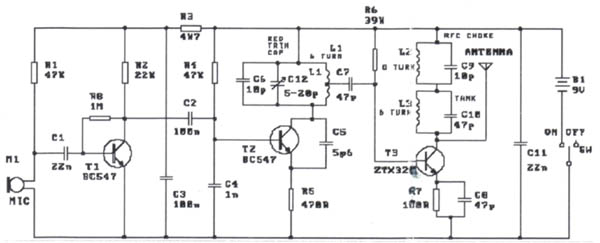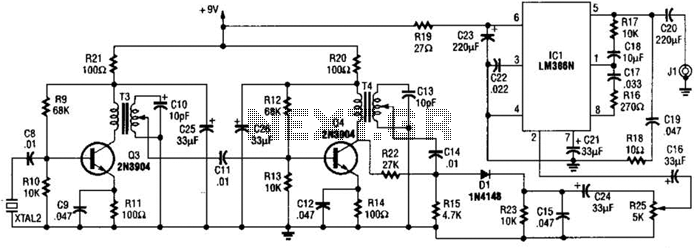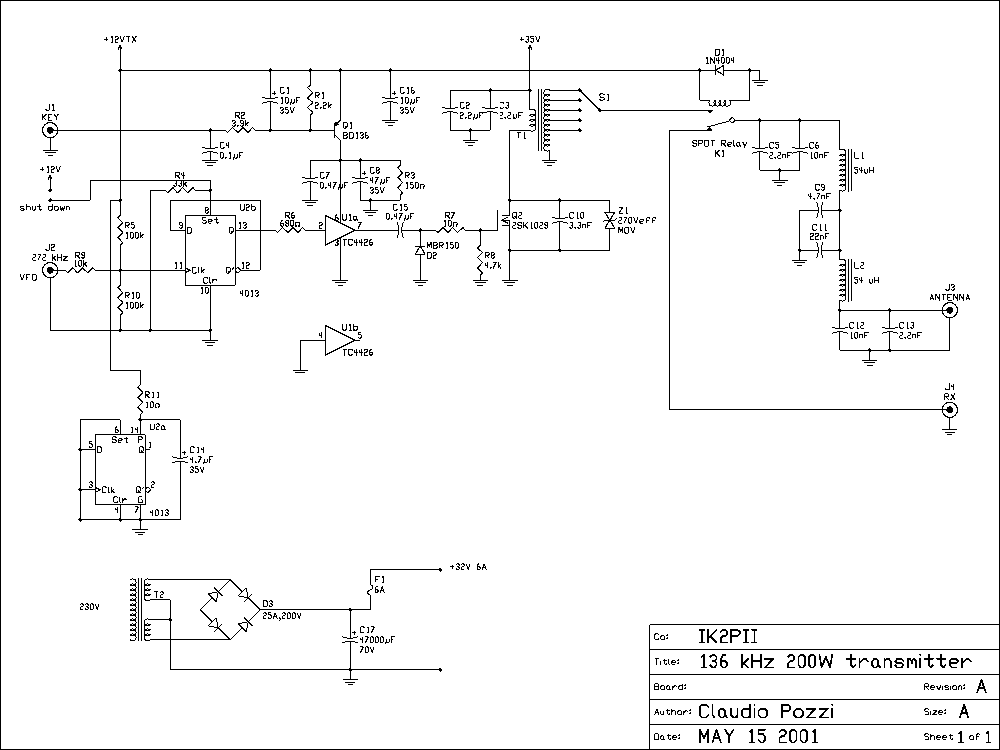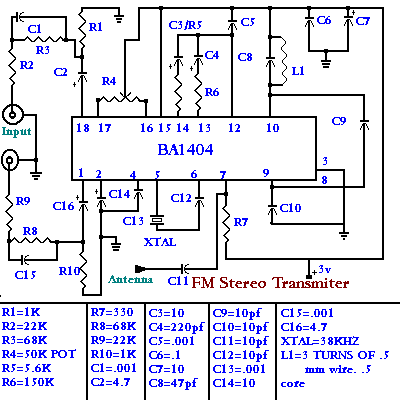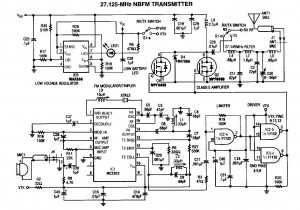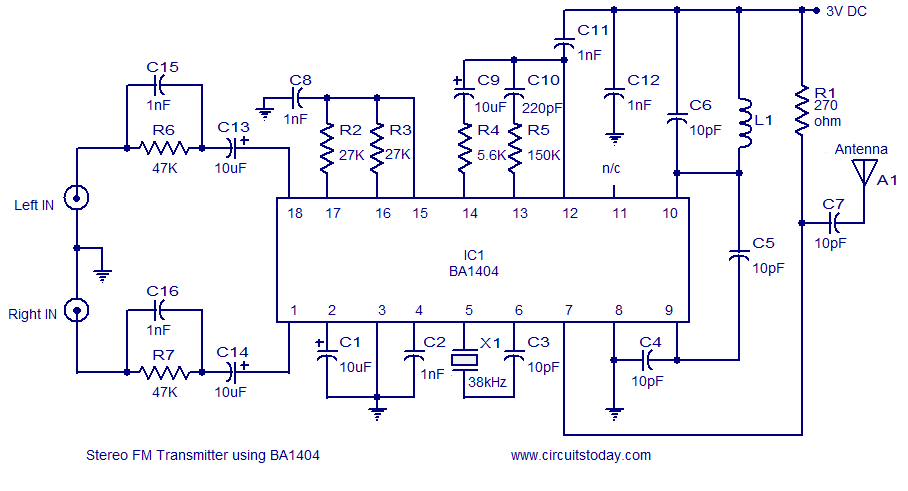
televition transmitter
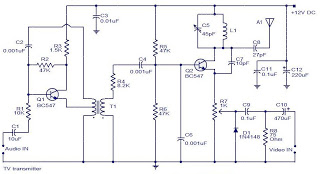
The camera is oriented to look out the side of the rocket during launch and downward during descent on the parachute. An optional external mirror can be added to enable the camera to look down during lift-off. The transmitter antenna, a Yagi style designed for the 1.25-1.30 GHz band, is located in the nose cone of the rocket. Below the nose cone, the electronics are housed in a unit that is attached to it. Once the rocket is suspended by its parachute, it slides out of the front payload bay. This deployment system can be activated at apogee, relying solely on gravity. The video transmission employs AM modulation, which includes an input for the sound carrier. The DCNV-1300 down converter has been selected to receive the 1.3 GHz TV signal and convert it to an intermediate frequency suitable for channel 3 or channel 4 on a standard VHF TV receiver.
The described system integrates several key components to facilitate video transmission and monitoring during a rocket's flight. The camera's dual orientation capability enhances the ability to capture critical flight data and environmental conditions. The optional external mirror provides flexibility in camera positioning, allowing for downward viewing during lift-off, which is particularly useful for documenting the launch process.
The Yagi antenna, known for its directional capabilities, is optimized for the 1.25-1.30 GHz frequency range, ensuring efficient signal transmission and reception. This choice of antenna is crucial for maintaining a stable communication link between the rocket and the ground station, especially as the rocket ascends and descends through various atmospheric layers.
The electronics package, securely mounted beneath the nose cone, houses the necessary circuitry for video processing and transmission. The design allows for the rocket to deploy its payload effectively once it reaches apogee. The reliance on gravity for deployment simplifies the mechanism and reduces the potential for mechanical failure.
AM modulation used for video transmission is a standard technique that allows for the inclusion of an audio signal, providing comprehensive data for analysis. The DCNV-1300 down converter is an essential component that translates the 1.3 GHz signal to an intermediate frequency, making it compatible with standard VHF TV receivers. This feature enables real-time monitoring of the rocket's flight and descent, facilitating immediate feedback and data acquisition during the mission.
Overall, this system represents a sophisticated integration of aerospace engineering and electronics, aimed at enhancing the capabilities of rocket-based observational missions.The orientation of the camera at launch is looking out the side of the rocket and during descent on the parachute, it is looking down. To allow the camera to look down during lift off, an external mirror can be optionally added. Located in the nose cone of the rocket is the transmitter antenna which is a Yagi style and specifically made for 1.
25-1 . 30GHz band. Packaged in a unit that is just below and is attached to the nose cone are the electronics. Once the rocket itself is suspended on its own parachute, it slides out of the front payload bay of the rocket. This system can be deployed at apogee with only gravity required. For the video, AM modulation is used that contains an input for the sound carrier. The DCNV-1300 down converter was selected in order to receive the 1. 3GHz TV signal. To enable viewing on a standard VHF TV receiver, it converts the 1. 3GHz TV signal down to an intermediate frequency for chan-3 or chan-4. 🔗 External reference
The described system integrates several key components to facilitate video transmission and monitoring during a rocket's flight. The camera's dual orientation capability enhances the ability to capture critical flight data and environmental conditions. The optional external mirror provides flexibility in camera positioning, allowing for downward viewing during lift-off, which is particularly useful for documenting the launch process.
The Yagi antenna, known for its directional capabilities, is optimized for the 1.25-1.30 GHz frequency range, ensuring efficient signal transmission and reception. This choice of antenna is crucial for maintaining a stable communication link between the rocket and the ground station, especially as the rocket ascends and descends through various atmospheric layers.
The electronics package, securely mounted beneath the nose cone, houses the necessary circuitry for video processing and transmission. The design allows for the rocket to deploy its payload effectively once it reaches apogee. The reliance on gravity for deployment simplifies the mechanism and reduces the potential for mechanical failure.
AM modulation used for video transmission is a standard technique that allows for the inclusion of an audio signal, providing comprehensive data for analysis. The DCNV-1300 down converter is an essential component that translates the 1.3 GHz signal to an intermediate frequency, making it compatible with standard VHF TV receivers. This feature enables real-time monitoring of the rocket's flight and descent, facilitating immediate feedback and data acquisition during the mission.
Overall, this system represents a sophisticated integration of aerospace engineering and electronics, aimed at enhancing the capabilities of rocket-based observational missions.The orientation of the camera at launch is looking out the side of the rocket and during descent on the parachute, it is looking down. To allow the camera to look down during lift off, an external mirror can be optionally added. Located in the nose cone of the rocket is the transmitter antenna which is a Yagi style and specifically made for 1.
25-1 . 30GHz band. Packaged in a unit that is just below and is attached to the nose cone are the electronics. Once the rocket itself is suspended on its own parachute, it slides out of the front payload bay of the rocket. This system can be deployed at apogee with only gravity required. For the video, AM modulation is used that contains an input for the sound carrier. The DCNV-1300 down converter was selected in order to receive the 1. 3GHz TV signal. To enable viewing on a standard VHF TV receiver, it converts the 1. 3GHz TV signal down to an intermediate frequency for chan-3 or chan-4. 🔗 External reference
